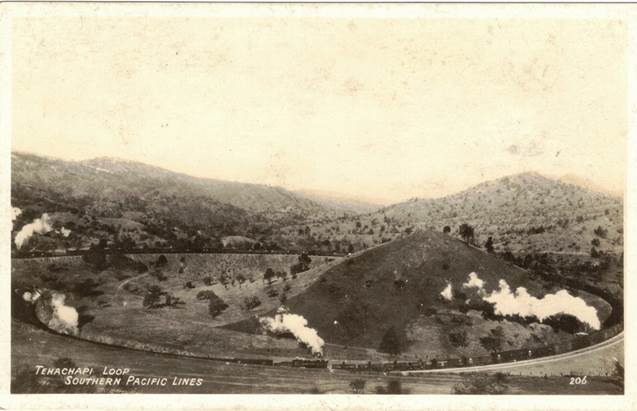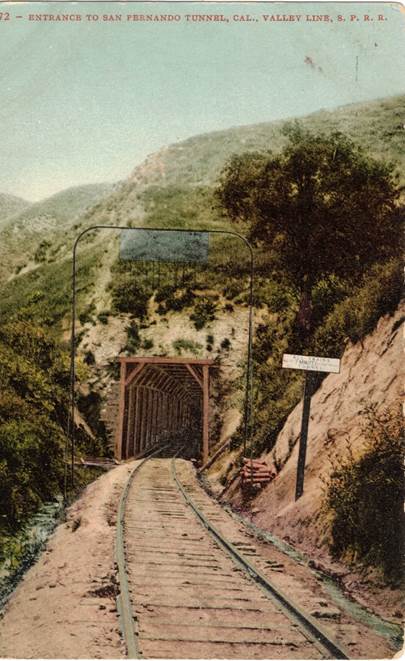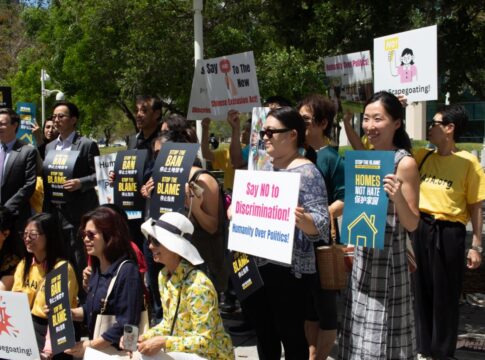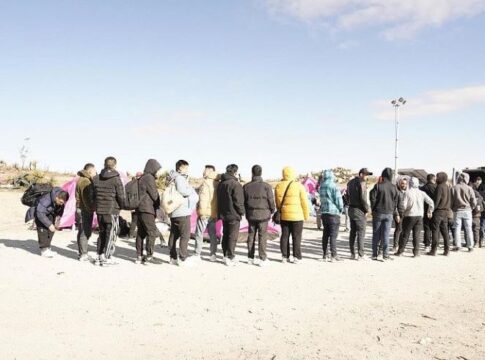By Raymond Douglas Chong, AsAmNews staff writer
Much has been written about the Chinese contribution to the building of the Transcontinental Railroad. Less known is the work of many of these same individuals to build the Second Transcontinental Railroad.
Known as the Army of Canton, these workers scattered across the wilderness of the American West or returned to China after the Golden Spike ceremony at Promontory Summit, Utah on May 10, 1869.
Chinese sojourners went to work in farming, mining, and logging across the America West. They built levees along the rivers in the Central Valley. They went to Chinatowns, and the small towns. They entered domestic service as houseboys. They worked in manufacturing to produce cigars and other items.
Many Chinese railroad workers also helped to build and maintain at least 70 other railroad lines and railroad depots in the American West and in the America East. The Army of Canton continued to build the Second Transcontinental Railroad.
LATEST STORIES
Background

From the west, Central Pacific Railroad began the route at Lathrop in California in December 1869. It marked the western leg of the First Transcontinental Railroad. A 133-mile spur railroad line connected San Francisco with Lathrop built by San Francisco & San Jose Railroad and Western Pacific Railroad.
Southern Pacific Railroad began their 1,104-mile segment in 1869 at Lathrop, California. After Central Pacific Railroad built the initial railroad line from Lathrop to Goshen in San Joaquin Valley, Southern Pacific Railroad assumed ownership. The top priority was to connect Los Angeles with San Francisco. It traversed Arizona Territory toward Tucson and New Mexico Territory, along San Joaquin Valley, Mojave Basin, and Sonoran Desert.
From the east, Atchison, Topeka, and Santa Fe Railway began their 1,134- mile segment in 1869 at Topeka, Kansas. It traversed Colorado and New Mexico Territory toward Albuquerque along the Great Plains and New Mexico Plateau, near the Southern Rockies, by the Continental Divide.
Chinese Sojourners
The Chinese sojourners hailed mainly from Sze Yup, the four counties of Toishan, Hoyping, Sunwui, and Yanping in Kwangtung province.
The Cantonese men were peasants who struggled to survive in the lush valleys and rich fields of the Pearl River Delta near South China Sea. During the decaying Ching Dynasty, Cathay was in tumultuous chaos as Kwangtung province was swept by myriad wars. Millions were killed in battles, starved in famines, and drowned in floods.
White workers had supervisory or skilled positions such as carpenters and blacksmiths. The work of the Chinese ranged from basic unskilled tasks, such as clearing and grubbing, and moving earth, to highly skilled tasks, such as blacksmithing, carpentry, tunneling, and drayage. They were cooks, medical practitioners, masons, and loggers. In the stark wilderness among ravines and rivers, they cleared and grubbed the railway, graded the railroad bed, laid tracks with ties, built earth embankments, retaining walls and trestle bridges, bored the tunnels, and installed telegraph poles and wires. They used picks, shovels, wheelbarrows, carts, and horses.
The Chinese relentlessly toiled six days per week, from dawn to dusk. They dressed in indigo frocks and loose trousers with straw hats and leather boots with queues, a Manchu hairstyle mandated by the sovereign of Imperial China. A White foreman supervised each Chinese work gang. A headman, who spoke English, collected the wages, and ordered the supplies for his countrymen.
A cook organized all meals for the work gang. In the morning, he daily prepared a simple breakfast of congee and dried fruits. In the evening, he prepared a nutritious dinner. On Sunday, he delighted them with a sumptuous feast. The cook prepared aromatic Cantonese meals with rice or vermicelli, jumbled with fresh pork, duck, chicken, and sausage. He supplemented the meals with dried cuttlefish, oyster, abalone, shrimp, scallops, squid, and soybean cakes. With peanut oil in a wok, the cook stir-fried them with pickled vegetables, dried mushrooms, bamboo shoots, seaweed, and spices.
The Chinese leisurely smoked opium to relieve the raw tedium and sorrowful angst. They tenderly reminisced and wrote letters to their loved ones. They lived in flimsy canvas tents in groups of eight. Before dinner, they sponged bath from hot water tubs and changed to fresh clothes. They always drank lukewarm tea. They treated their ailments with herbs. In this austere environment, camaraderie prevailed among the men in the work camps.
Achievements
Southern Pacific Railroad faced daunting challenges including funding shortfalls, labor shortages, and engineering obstacles. They included the Tehachapi Mountains, the San Gabriel Mountains, and the Colorado River. It took 12 years, from 1869 to 1881, to complete the Second Transcontinental Railroad.

At the Tehachapi Pass near Mojave Desert, two thousand Chinese toiled along with White workers using picks, shovels, horse drawn carts, and blasting powder, to cut through solid and decomposed granite. They built tunnels, bridges, and water towers. The 28 mile-single-track line crosses over itself, forming the Tehachapi Loop, at a summit elevation of 4,025 feet at 2.2% grade. Engineer William Hood had designed one of the Seven Wonders of the Railroad World: The Tehachapi Loop. The tracks loop around a hill and cross over, gaining or losing 77 feet of elevation. A total of 17 tunnels, 7,684 feet in total length, were bored. Trains reached the summit in July 1876.

Frank Frates supervised 1,000 Chinese and 500 White workers during construction of the San Fernando Tunnel thru the San Gabriel Mountains. It required construction on the tunnel. Work began on March 22, 1875. The crew faced a sandstone mountain saturated with water and oil, causing frequent cave-ins and loss of life. Remi Nadeau stated, Oriental toilers fell at their work in regular succession and had to be carried to the sunshine burning with fever. The San Fernando Tunnel was completed on July 14, 1876. It was the third longest tunnel, 6,966-foot-long,in the United States.
On September 5, 1876, at Lang Station, near Palmdale, Charles Crocker, President of the Southern Pacific Railroad drove a gold spike to complete the railroad line, between San Francisco and Los Angeles. Three thousand Chinese attended the ceremony at Lang Station. Remi Nadeau described the scene: Clad in basket hats, blue denim jackets and trousers, and cotton sandals, stood along either side of the mounded right-of-way. Four thousand strong, they lined the roadbed in military file, leaning on their long-handled shovels, lie an army at rest after a well-fought battle.
From Los Angeles Junction Station, the Army of Canton marched thru the Mojave Desert. The Southern Pacific Railroad line reached the Colorado River across from Fort Yuma, Arizona Territory, on May 23, 1877. The Howe Truss wooden bridge, a total length of 667 feet, spanned the Colorado River over on the high bluffs. It was built on seven river piers of seventeen cedar piles, each driven to a depth of twenty-six feet to thirty-two feet. The swing span allowed the passage of the river steamers along the deepest channel. The first steam locomotive train crossed the Colorado River on September 30, 1877.

Eastward from Yuma thru the Sonoran Desert, with a work force of 1100 Chinese and 200 Whites, Southern Pacific Railroad reached Tucson, Arizona Territory. On March 20,1880, a large crowd cheered the arrival of the first train. In June1880 federal census counted 854 Chinese at four work camps at Benson, near San Pedro River, east of Tucson.
On March 8, 1881, The Day of the Silver Spike, the Southern Pacific Railroad and Atchison, Topeka Railway and Santa Fe Railroad lines connected at Deming, New Mexico Territory, forming the 2,238-mile Second Transcontinental Railroad. About 250 Chinese in the crews worked across New Mexico Territory. A Chinese crew was comprised of three gangs: land clearing, digging and filling, and track laying.
Close
The Chinese railroad workers, peasants of Sze Yup, left a magnificent legacy with another monumental achievement in Gold Mountain, the Second Transcontinental Railroad. They constructed Tehachapi Loop, San Fernando Tunnel, and Colorado River Bridge, despite racial discrimination and harsh conditions. Nevertheless, the Chinese of the Army of Canton built the Second Transcontinental Railroad in America.
AsAmNews has Asian America in its heart. We’re an all-volunteer effort of dedicated staff and interns. Check out our new Instagram account. Go to our Twitter feed and Facebook page for more content. Please consider interning, joining our staff, or submitting a story.









This is outstanding and invaluable research on the significant contribution of Chinese immigrants in the mid to late 19th century to the building of connections of all parts of the country from coast to coast, after which Chinese were vilified as well as physically assaulted, deprived of rights by unfair laws, deported, and prevented from further laborers entering the country after 1882. Moreover, the “second” transcontinental railroad was every bit as vital as the celebrated “first” one. It is a “missing link” in Chinese American history as it helps explain how within a decade after 1869 when the first transcontinental railroad was completed, Chinese were found throughout what I call the “hinterlands”…the sparsely populated spaces between the east and west coasts. It was this ‘second’ transcontinental railroad that made this rapid remigration of Chinese possible to places where they were the only or few Chinese making their living operating laundries, and later, grocery stores and restaurants. Well done document, thanks Raymond!
Raymond, this is the most complete article on the second Transcontinental RR I have ever seen! My great-grandfather, Mock Chuck, was one of the pioneer Chinese headmen and labor contractors for the Central Pacific and later for the Southern Pacific, all the way to Texas. He hired Chinese workers from Tehachapi to Los Angeles.
Wonderful, Raymond…………
Raymond another article of a time and place that was full of excitement to keep reading and wondering what was next. You are wonderful writer and very knowledgeable about the stories. Look forward to reading more.
I had heard that many Chinese railroad workers continued to work on the railroads but, I had not heard this detailed information of where and what exact railroads they worked on until I read your article. Thank you for sharing this part of history with us. I really wish that future American history books would include not only the importance of the Chinese railroad workers on the Transcontinental Railroad but, also the second Transcontinental Railroad as well. I would also think the historians need to include all the other occupations that help build America such as miners, loggers, the medical personnel that you mentioned and the Chinese merchants and traders that helped the railroad workers, miners, and others with supplies, food and medical supplies from China and the Far East. With the recently published book “Ghosts Of Gold Mountain” by Gordon H. Chang it would be easy for historians to incorporate the researched that Mr. Chang has already documented into the future American history books. I would like my children and grandchildren to be able to read about how their ancestors hard diligent work contributed to the building of America in American history books.